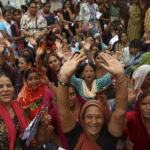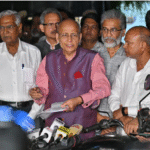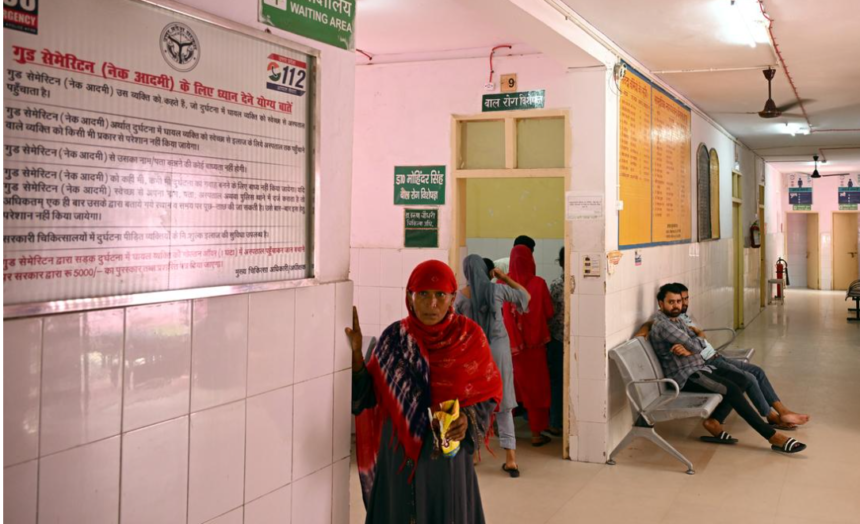The Kolkata Horror brutal rape and murder of a young female doctor in Kolkata earlier this year sent shockwaves across India, igniting a debate about the safety of women in the workplace, especially within the healthcare sector. While the incident at R.G. Kar Medical College and Hospital was particularly horrifying, it has underscored a broader, systemic issue that has long plagued state-run hospitals across the country. Despite the outcry and demands for better protection, female doctors continue to navigate a treacherous terrain, facing threats to their safety and dignity within these institutions.
The Kolkata Horror Incident: A Catalyst for Change?
The tragic death of the young doctor at R.G. Kar Medical College served as a grim reminder of the vulnerabilities faced by women in the medical profession. The investigation revealed that the doctor had been sexually assaulted and then murdered, allegedly by a colleague. The case quickly became emblematic of the dangers that female doctors face, not just from patients or the public, but from within the very institutions meant to protect them.
The outpouring of anger and grief that followed the incident led to protests and demands for stricter safety measures in hospitals. However, as the dust settled, it became evident that the problems faced by female doctors in state-run hospitals are deeply ingrained and multifaceted, requiring more than just reactionary measures.
The Precarious Reality of Female Doctors in State-Run Hospitals
State-run hospitals in India are notorious for their challenging working conditions. Overcrowded, underfunded, and often understaffed, these institutions place immense pressure on the medical professionals who work there. Female doctors, in particular, are disproportionately affected by the myriad issues that stem from these conditions.
1. Sexual Harassment and Assault: An Endemic Problem
Kolkata Horror Sexual harassment and assault are pervasive problems in many workplaces, and state-run hospitals are no exception. Female doctors often find themselves at risk of unwanted advances, inappropriate behavior, and, in extreme cases, physical assault. The hierarchical structure of medical institutions, where senior doctors hold significant power over their juniors, exacerbates the issue, making it difficult for victims to come forward.
Kolkata Horror In many cases, female doctors are reluctant to report incidents of harassment due to fear of retaliation, social stigma, or the belief that their complaints will not be taken seriously. The absence of effective grievance redressal mechanisms further compounds the problem, leaving victims with little recourse.
2. Unsafe Working Conditions and Inadequate Security
The Kolkata Horror physical safety of female doctors is another pressing concern. State-run hospitals, especially those in urban areas, often operate around the clock, with doctors required to work late-night shifts or on-call duties. The lack of adequate security measures during these hours leaves female doctors vulnerable to attacks, both within and outside the hospital premises.
In many hospitals Kolkata Horror, security personnel are either insufficient in number or poorly trained, making them ill-equipped to handle situations that threaten the safety of staff. The case in Kolkata highlighted how the absence of robust security protocols can have fatal consequences, yet similar conditions persist in many other state-run hospitals.
3. Hostile Work Environment and Gender Discrimination
Beyond the immediate threats of harassment and physical harm, female doctors also contend with a hostile work environment characterized by gender discrimination. Despite the growing number of women entering the medical profession, male doctors often dominate the higher echelons of the medical hierarchy. This imbalance of power can lead to discriminatory practices, such as unequal pay, limited opportunities for career advancement, and biased decision-making.
The culture of sexism in some hospitals perpetuates stereotypes that undermine the competence and authority of female doctors. This not only affects their professional growth but also creates an environment where their concerns about safety and well-being are dismissed or minimized.
4. Psychological Toll and Mental Health Challenges
The Kolkata Horror cumulative impact of harassment, discrimination, and unsafe working conditions takes a significant psychological toll on female doctors. Many experience chronic stress, anxiety, and burnout, which can lead to more severe mental health issues such as depression or post-traumatic stress disorder (PTSD). The pressure to maintain a façade of strength and resilience often prevents female doctors from seeking help, further exacerbating their mental health challenges.
The stigma surrounding mental health in the medical profession, coupled with the demanding nature of the job, leaves female doctors in a precarious position where they are expected to care for others while their own well-being is neglected.
The Systemic Failures Exposed
The Kolkata Horror ongoing challenges faced by female doctors in state-run hospitals can be traced back to systemic failures that have been neglected for far too long. These include inadequate policies, lack of enforcement of existing laws, and a pervasive culture of silence and complicity.
1. Inadequate Policies and Lack of Implementation
While Kolkata Horror there are laws and policies in place aimed at protecting women from sexual harassment and ensuring their safety in the workplace, their implementation in state-run hospitals is often lacking. The Sexual Harassment of Women at Workplace (Prevention, Prohibition, and Redressal) Act of 2013, commonly known as the POSH Act, mandates that all organizations, including hospitals Kolkata Horror, establish Internal Complaints Committees (ICCs) to address complaints of harassment. However, many hospitals either do not have functional ICCs or fail to provide the necessary support to victims.
Furthermore Kolkata Horror, the lack of regular training and awareness programs on gender sensitivity and workplace harassment contributes to the persistence of these issues. Without a proactive approach to enforcing these policies, they remain mere formalities on paper, failing to bring about meaningful change.
2. Failure of Institutional Accountability
Institutional Kolkata Horror accountability is a critical factor in ensuring the safety and well-being of female doctors. Unfortunately, many state-run hospitals lack the mechanisms to hold perpetrators of harassment and violence accountable. In some cases, senior officials and administrators may even attempt to cover up incidents to protect the reputation of the institution, further victimizing the affected individuals.
The culture of silence that prevails in many hospitals discourages victims from coming forward Kolkata Horror, knowing that their complaints may be ignored or, worse, lead to further victimization. The absence of transparent and impartial investigations into complaints of harassment and assault allows perpetrators to escape consequences, perpetuating a cycle of abuse.
3. Cultural and Social Barriers
Cultural and social barriers also play a significant role in the challenges faced by female doctors in state-run hospitals. Deeply ingrained patriarchal norms and gender biases often dictate how women are treated in the workplace. Female doctors may be expected to conform to traditional gender roles, balancing their professional responsibilities with societal expectations of caregiving and domestic duties.
In addition, the fear of social stigma often prevents female doctors from reporting harassment or assault. In a society where victim-blaming is still prevalent, the burden of proof is often placed on the victim, leading to a reluctance to pursue justice.
The Way Forward: Addressing the Crisis
The tragic events in Kolkata and the ongoing struggles of female doctors in state-run hospitals highlight the urgent need for comprehensive reforms to address the safety and well-being of women in the medical profession. These reforms must be multi-faceted, involving policy changes, cultural shifts, and enhanced accountability.
1. Strengthening Security Measures
One of the most immediate steps that can be taken is to strengthen security measures in state-run hospitals. This includes increasing the number of trained security personnel, installing surveillance cameras, and ensuring that hospital premises are well-lit and monitored, especially during late-night shifts. Access to secure transportation for female doctors working late hours can also be a critical safety measure.
Additionally, hospitals should establish clear protocols for responding to incidents of harassment or assault, ensuring that victims receive prompt and appropriate support.
2. Implementing and Enforcing Policies
The implementation and enforcement of existing policies, such as the POSH Act, must be prioritized. Hospitals should establish or reinvigorate Internal Complaints Committees (ICCs) with the authority to investigate complaints impartially and take necessary action against perpetrators. Regular training sessions on gender sensitivity and workplace harassment should be mandatory for all hospital staff, including senior management.
To ensure transparency and accountability, hospitals should maintain records of complaints and their outcomes, and this information should be made available to relevant oversight bodies.
3. Fostering a Culture of Respect and Inclusivity
Addressing the cultural and social barriers that contribute to the challenges faced by female doctors requires a concerted effort to foster a culture of respect and inclusivity within hospitals. This involves challenging and dismantling gender stereotypes, promoting equal opportunities for women in leadership positions, and encouraging an open dialogue about the issues facing female doctors.
Mentorship programs that pair female doctors with senior colleagues who can provide guidance and support can also play a crucial role in empowering women in the medical profession.
4. Providing Mental Health Support
The mental health of female doctors must be a priority. Hospitals should provide access to mental health services, including counseling and therapy, for doctors dealing with the psychological toll of their work. Creating a supportive environment where female doctors feel comfortable seeking help without fear of stigma is essential to their well-being.
Conclusion
The Kolkata incident was a stark reminder of the dangers that female doctors face in state-run hospitals, but it was far from an isolated case. The systemic issues that perpetuate a hostile and unsafe work environment for female doctors must be addressed through comprehensive reforms that prioritize their safety, dignity, and well-being.
State-run hospitals, as vital institutions within the healthcare system, have a responsibility to create a workplace where all doctors, regardless of gender, can perform their duties without fear of harassment, discrimination, or violence. It is only by addressing these deep-seated issues that we can ensure that female doctors are able to contribute to the healthcare system without compromising their safety and mental health.
The road to achieving these changes will not be easy, but it is a necessary journey if we are to honor the memory of those like the young doctor in Kolkata and prevent such tragedies from occurring in the future. ALSO READ:- Sandip Ghosh CBI Permitted to Conduct Polygraph Tests on Former R.G. Kar Medical College Principal Sandip Ghosh and Four Other Doctors 2024





